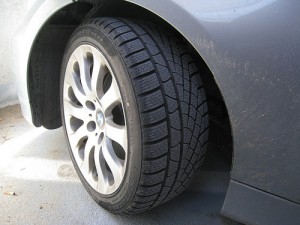It may be cliché to say that there’s a lot riding on your vehicle’s tires, but that doesn’t make the saying any less true. Proper tires are key to the handling of your vehicle, and when they wear down or blow on the road, they become a safety risk. Bad tires can also be detrimental to the other parts of your vehicle, increasing the importance of owners regularly checking their tires.
But while it’s important to recognize when it’s time to replace tires, it’s just as important that owners understand how to choose a new set. There’s a wide range of quality to be found in the tire market, and if you don’t know how to evaluate these options you could end up buying a set with a short lifespan and poor durability.
To help you navigate this process, here’s a quick guide to assessing your current tires, maximizing their lifespan and replacing them with the best set possible.
Check for wear
Every few months, you should look at your tires to see if any signs of wear have developed. While it’s true that any tire will change in appearance after some use, tires typically start showing some more distinct marks when serious wear is taking place.
For one, the edges of the tire can be worn. This typically occurs when tires are not adequately inflated. If left untended, the worn edges could lead to a leaking or blown tire. To remedy this issue, simply inflate the tires to their manufacturer specifications.
When uneven wear develops on the tires, your tires are probably out of alignment. An alignment is a simple procedure that your mechanic can take care of you, and for a nominal cost.
Finally, if worn edges are appearing only on the front tires, it usually indicates that you are taking corners too quickly and are causing the tires to ride on their edges. Slow down when turning to improve the health of your tires.
Be sensitive to noise
If your tires are making unexplained whining noises, take them to a car mechanic immediately. There are several reasons this could occur, including bad alignment, problems in the shock system, or worn treads. When this occurs, you need to address the issue quickly to protect your tires and, if necessary, to reduce any damage that’s occurring to the rest of your car.
Be mindful of inflation
Tires tend to lose air slowly over time, but as seasons and temperatures change, the expanding and contracting air in your tires can change the tire pressure. Keep an eye on the tire pressure in your wheels and make adjustments as needed. While over-inflation can lead to blown tires, avoid driving on wheels that are under-inflated — this will accelerate the wear on your tires.
When it’s time for new tires
No matter how well you care for your tires, no set lasts forever. As you start your search for a new set, familiarize yourself with the characteristics that will affect your experience with a given set of tires.
First off, make sure that the tires you choose are designed for the weather in your region. If you live in an area where snow falls in the winter, invest in all-weather tires, which offer the greatest all-around performance.
Tires should have at least an average speed rating, although there isn’t much need for high-speed ratings on tires when it comes to regular wear and tear. Seek out tires that have a low noise rating, particularly if you live in a quiet neighborhood. Ride quality will be determined by a number of factors, including thread quality and overall tire performance — make sure you invest in a pair that will offer a smooth experience.
Choose the longevity and quality of your tires, measured in terms of mileage expectancy, according to the tire thread life. And never buy tires without first confirming that the tire size matches your specific car — if you have upgraded the vehicle’s original equipment, you’ll want to make sure the wheel space is measured.
By conducting your due diligence when it comes to tires, you can reduce flats and blowouts and extend the life of your wheels. And when it comes to choosing a new set, you’ll be prepared to ask the tough questions and weed out the bad from the good. That will reward you with continued excellent tire performance for thousands of miles in to the future.
